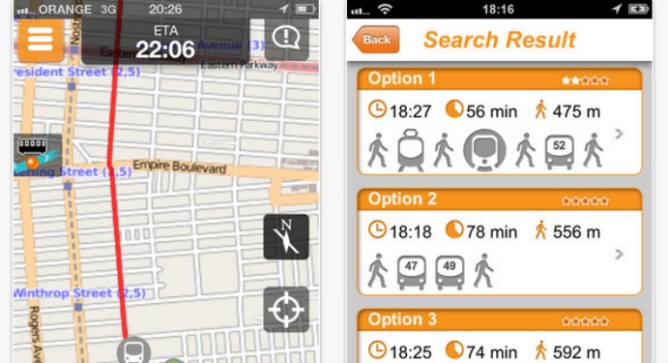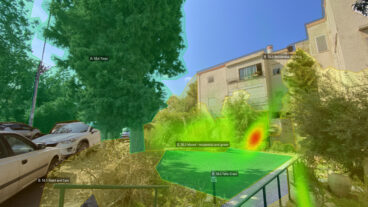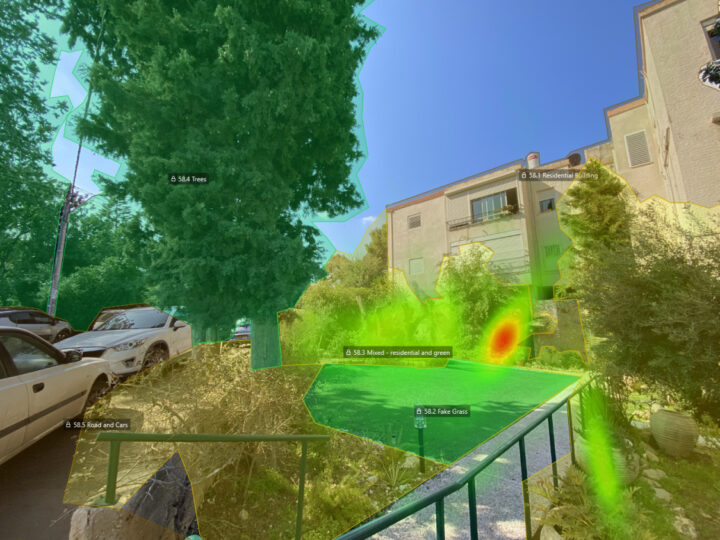Getting the public more involved in public transportation is a motto of the new Israeli app developed by Moovit. The 20-person company based in Nes Ziona is financed with more than enough bus fare: Some $3.5 million is fueling the company that wants to change the way you ride the bus, take the train and get to point A to point B using the heel-toe-express.
For the 650,000 users already subscribed in 30 cities worldwide, with a majority of them in New York City and Los Angeles, change is already afoot.
Spread the Word
• Email this article to friends or colleagues
• Share this article on Facebook or Twitter
• Write about and link to this article on your blog
• Local relevancy? Send this article to your local press
Moovit is a free app download that is kept open on your smartphone when you ride the bus, train or subway. It does not work underground, but reconnects once the user surfaces.
“We accompany you throughout your journey from your home in Manhattan, let’s say, to your destination in Brooklyn. If you are not sure where the bus stop is, we will give you an alert and offer walking directions from the point you exit the bus,” says Amy Wyron, marketing manager of Moovit.
Air conditioning on, or too crowded?
Based on Open Street Maps, the Wikipedia of maps, Moovit is built on data collected by transportation companies –– usually bus schedules, and sometimes real-time GPS data from buses on the move.
Overlaid on that is information supplied by people logged on to the Moovit app, which is paired to the Internet connectivity inside your smartphone. When people are actually riding the bus with the app open, Moovit passively collects speed and location data, to give real-time info to the user. People can also choose to send reports about whether the bus is crowded, the air conditioning is working or the train’s Wi-Fi is down.
With all this data together, Moovit can suggest which bus or train to take in order to arrive at the destination faster. It can provide alternate routes, alert you when you need to get off, and guide you every step of the way toward your destination.
Connected with open-source data, users build the app as they go, making the public transportation experience more efficient and less random.
It is similar in function to the wildly popular traffic-bashing application Waze, made by an Israeli company that uses public data from drivers to help steer you away from logjams on the way to work or play.
Indeed, Waze inspired the creation of Moovit, says Wyron, and one of the executives from Waze is on the Moovit board.
“The popularity of Waze shows how powerful the crowd can be in generating real-time data,” says Wyron. “It was inspiring to our founders and opened their eyes to the powers of the crowd.”
Taking on the globe one bus route at a time
But Moovit has a different agenda. Wyron explains: “Waze is an amazing tool [for] daily commuters who know how to get to work but are using the app to drive. We are targeting a different audience.
“When you are driving in a car, there’s no schedule. On Moovit, from Day 1 we can offer a complete schedule-based solution with all of the info according to the schedule in every market we work in. We work to coordinate with the public transport authorities and many of them already have real-time data feeds to monitor their bus fleets using GPS. We cooperate with transit operators to provide that data to the Moovit users.”
Moovit was founded in 2011, and launched in Israel in March 2012, and in international cities six months later, starting with Madrid. It is now available in cities across the globe, including New York, Los Angeles, Washington, Boston, San Diego and about 10 more US cities. It’s been a big hit in San Paolo, Brazil.
The data Moovit collects can be a two-way street, providing added value to transport operators by revealing details about user behavior so that more efficient routes and schedules might be planned in the future.
Wyron expects that Moovit will always be free for the end-user.

















